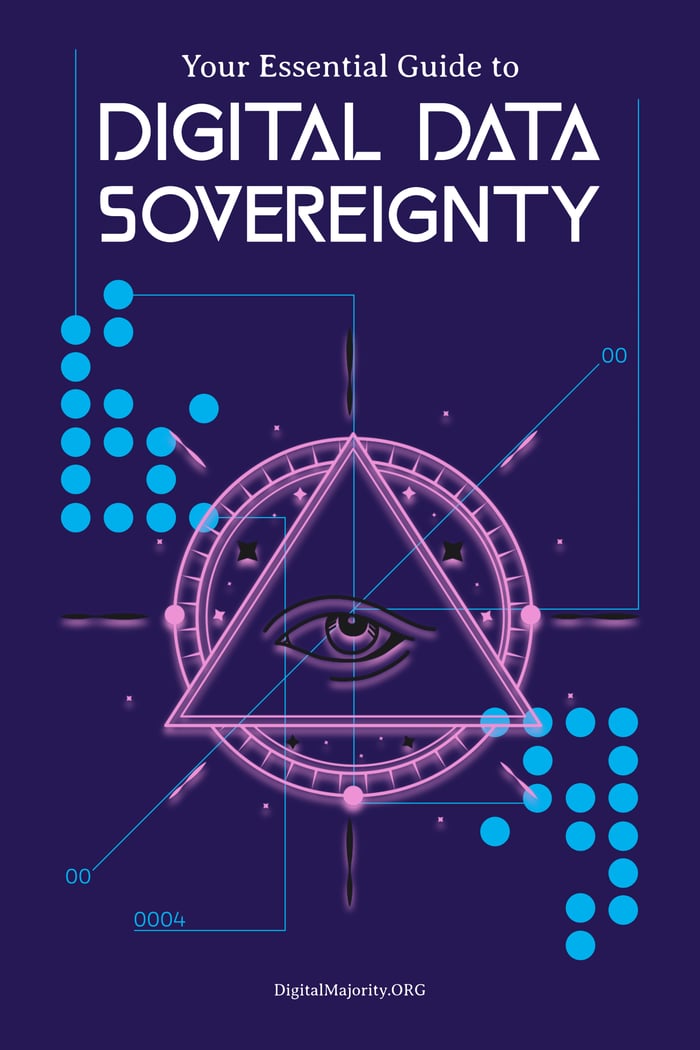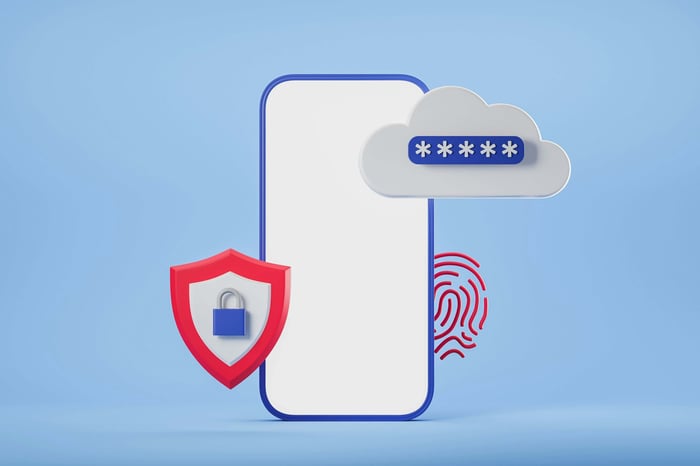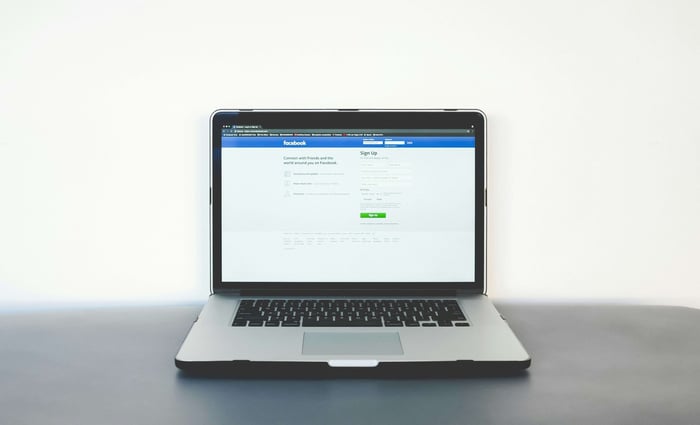
Digital Footprint Audit & Reclaim Your Personal Sovereignty
Table of Contents
Your Digital Footprint Audit: A Step-by-Step Guide to Take Control
Every click, post, or account you create leaves a trace—your digital footprint. But how many of these footprints are forgotten or unmanaged? A digital footprint audit helps you identify, understand, and take control of these traces to safeguard your personal and professional reputation. From forgotten accounts to unintended online exposure, knowing what's out there is the first step to owning your digital presence.
Understanding Your Digital Footprint
Your digital footprint is more than just a trace—it’s a reflection. Every interaction online, from casual browsing to full-blown social media engagement, contributes to the data tapestry that represents your digital life. But not all footprints are created equal. Understanding the nuances of your online presence is a crucial first step in performing a thorough digital footprint audit.
Active vs Passive Digital Footprints
Not all parts of your digital presence are intentional or even within your control. Your active digital footprint includes anything you purposefully post or engage with online. This could be:
- Tweets, Instagram posts, or TikTok videos.
- Comments or reviews on e-commerce websites.
- Emails and direct messages.
In contrast, your passive digital footprint is the data collected about you without your direct input. Think of it as the digital residue left behind. Examples include:
- Websites tracking your browser cookies.
- GPS data shared through apps.
- IP addresses logged by servers.
Consider this example: while you may actively share a recipe on your blog (active footprint), the website hosting your blog could quietly track visitor statistics and ad clicks (passive footprint). This differentiation highlights why understanding both is so important. You might own your active contributions, but passive data often exists in the hands of third parties.
To learn more about how your data trails interact with third-party systems, check out this guide on digital footprint examples and ways to reduce them.
The Extent of Your Digital Shadow
Don’t assume your online presence ends with your public social media profiles. The reach of your digital shadow can extend far beyond what you actively use. It encompasses hidden layers of your digital existence, including perhaps-forgotten pieces of your internet history. These might include:
- Long-abandoned MySpace or AOL accounts.
- Unused email addresses tied to old subscriptions.
- Data from apps you deleted but failed to fully disassociate from.
Even your browsing habits can form part of this shadow. Behind every website are trackers documenting your activity, building profiles for marketing purposes.
For example, biometric data, geolocation usage, and even Yelp reviews could all contribute to your larger digital portrait. As described by TechTarget in their piece on digital footprint definitions, these invisible aspects often remain out of sight but not out of reach for corporations and data brokers.
Recognizing the extent of your digital shadow empowers you to go beyond just auditing social media accounts. It’s about identifying every corner of your online presence and deciding what deserves to stay and what must go.

Tools for Conducting a Digital Footprint Audit
Conducting a thorough digital footprint audit helps you regain control over your online presence. From forgotten accounts to documenting your digital assets, the tools and methods below can make this process efficient and effective.
Discovering Forgotten Online Accounts
Forgotten online accounts can contribute to your digital shadow and pose privacy risks. Identifying these accounts is the first step in your audit. Here are some reliable tools and methods to help you locate and manage them:
- Email Search: Use your primary and secondary email accounts to search for past registrations. Look for keywords like "welcome" or "account confirmation" in your inbox or trash folders.
- Google Search: Perform a search of your name or old usernames on Google. Adding terms like "profile" or "account" can surface forgotten profiles.
- Account Search Services: Use tools such as Deseat.me to identify accounts linked to your email. These services help you pinpoint accounts and even facilitate deletion requests.
- Password Managers: If you’ve used a password manager, browse its saved data. Tools like LastPass or 1Password often store details of accounts you might have forgotten.
For a deeper look at auditing your digital traces, this guide on how to check your digital footprint could be helpful.

Creating Your Personal Digital Asset Registry
Once you've uncovered all your digital accounts, the next step is building a personal digital asset registry. Think of it as your inventory—a single document where all your digital assets are organized and accounted for. Here’s how to create one:
- Organize by Category:Divide your digital assets into categories such as:
- Social Media (e.g., Instagram, Twitter)
- Subscriptions (e.g., streaming services, online courses)
- E-commerce Accounts (e.g., Amazon, eBay)
- Email Accounts (work and personal)
- Include Access Information: Note usernames, associated email addresses, and account recovery methods. Avoid listing passwords for security reasons—instead, rely on a secure password manager.
- Update Regularly: Revisit and refresh your registry every six months. Add new accounts and remove ones you’ve deactivated.
- Use a Template: If you're starting from scratch, tools like Excel or Google Sheets provide a simple way to structure your registry. Alternatively, privacy-focused apps offer encrypted storage for your digital inventory.
Want a practical example of why this matters? Leaving unused accounts active can make you vulnerable to identity theft or data breaches—as explored in articles like audit your digital footprint.
By leveraging these tools and organizing your digital profile, you're not only protecting your personal data but also ensuring your online narrative reflects who you are today. Stay proactive, and you'll reclaim ownership of your digital self.

Steps for a Comprehensive Digital Footprint Audit
Taking control of your digital footprint is no longer optional; it’s essential. Whether you're concerned about online privacy or professional branding, understanding your digital presence is the key to safeguarding your reputation. Here’s a step-by-step guide to auditing your digital footprint.
Step 1: Google Yourself
The first step to uncovering your digital footprint is as simple as Googling your name. Curious why this matters? Think about it: if a potential employer, client, or even a curious acquaintance were to search for you, what would they find?
Here's how to effectively analyze your results:
- Search Variations: Use different combinations of your full name, nicknames, and usernames. Don’t forget to check image and video results.
- Check Multiple Pages: Go beyond the first page of results. Sometimes, unexpected or older traces appear on subsequent pages.
- Use Incognito Mode: Perform your searches in a private browser to ensure the results aren’t influenced by your previous browsing habits.
Once you've done this, take note of the content that surfaces. Does it align with the image you want to present? If not, identifying these issues now gives you the opportunity to take corrective action. For more on how Google results can impact your footprint, check out this digital footprint audit resource.

Step 2: Review Privacy Settings
Your social media and online accounts are gateways to your personal information. Are you sure only the right people have access to your data?
Here’s why reviewing privacy settings is vital:
- Who Can See What: Platforms like Facebook, Instagram, and LinkedIn allow you to control who sees your posts, photos, and contact information.
- Third-Party App Access: Check which apps or websites have access to your accounts. Revoke permissions for those you no longer use.
- Update Regularly: Privacy settings can change. Make it a habit to review yours every few months.
This step not only limits your exposure but also ensures you maintain ownership of your online persona. For deeper insights, refer to this analysis on managing your digital footprint.

Step 3: Evaluate Your Content
What you post online says a lot about you. But have you ever paused to assess what picture it paints? This step is about taking a closer, critical look at your online content:
- Posts and Comments: Review old social media posts and comments. Delete anything outdated, irrelevant, or potentially controversial.
- Photos and Videos: Do visual posts represent your current personal or professional image? Remove anything that might send mixed messages.
- Tagged Content: Check content others have tagged you in. Untag yourself from anything that doesn’t reflect your intended image.
Think of this as curating a digital portfolio. Just like you wouldn’t let an outdated resume sit on your desk, your online presence should reflect your current goals and values.

Step 4: Manage Your Digital Footprint
Now that you’ve identified and assessed your digital traces, it’s time to take action. Here's how to manage and improve your footprint:
- Delete Unused Accounts: Old accounts, like a forgotten MySpace page or unused forums, can expose you to unnecessary risks. Utilize tools like Deseat.me to locate and delete unused accounts.
- Build a Positive Presence: Actively contribute to platforms that present you in a professional or personal light, like LinkedIn or personal blogs.
- Monitor Regularly: Set Google Alerts for your name or usernames. This way, you’re notified whenever new content about you appears online.

Proactively managing your digital presence ensures others see what you want them to see. As highlighted in this guide on how to audit your online presence, proper management is about more than just cleanup—it’s about narrating your unique story.
By following these steps, you can gain control over your digital footprint and ensure it truly reflects the person you are today.
Real-World Impact of Unmanaged Digital Footprints
Unmanaged digital footprints often lead to consequences far beyond what many realize. From personal privacy breaches to corporate scandals, the ripple effects of unchecked online behavior can be significant. With growing reliance on digital spaces, understanding the potential fallout of an unmanaged digital presence is more critical than ever.
Case Studies: Provide examples of individuals or companies affected by their digital footprints
When it comes to unmanaged digital footprints, the consequences can manifest in unexpected ways. Below are some real-world examples highlighting both personal and corporate impacts:
Personal Example: Identity Theft through Neglected Accounts
A young professional discovered that their old, abandoned MySpace account had been hacked. The compromised account, containing personal photos and outdated information, became a target for cybercriminals who used it to attempt identity theft. Without active monitoring, such situations often go unnoticed until significant damage is done. For more on how your digital trail can trigger identity theft, explore this guide on the consequences of digital footprints.

Corporate Example: Data Breach through Unsecured Channels
A well-known retail chain faced a cybersecurity scandal after a forgotten subdomain—long unused and poorly secured—was exploited by hackers, leading to a massive leak of customer data. This incident not only resulted in reputational damage but also cost the company millions in fines and settlements. Cases like this underline the importance of digital footprint audits in identifying and securing vulnerabilities. For deeper insights, consider this article on the risks tied to unmanaged digital assets.

Reputational Damage through Social Media
An aspiring political candidate faced backlash when old tweets from over a decade earlier resurfaced, containing insensitive remarks. Digital footprint audit would reveal those content, and while those tweets no longer represented their current views, their unmanaged digital history painted a negative picture, costing them the campaign. Public figures especially must remain vigilant about their online past to avoid such pitfalls. Stories like this are echoed in discussions on how negative digital footprints can affect your life.

These examples make it clear: ignoring your digital footprint is not an option. Whether you’re an individual concerned about your privacy or a company safeguarding your brand, proactive management is essential. Would your digital trail hold up under scrutiny? It might be time to find out.
Conclusion and Call to Action
Your digital footprint is more than just data; it’s your digital story. This article has explored why performing a digital footprint audit is essential in today's connected world. By understanding your digital shadow and actively managing your presence, you not only protect your information but also shape the most authentic online version of yourself.
Why Take Action Now?
The internet archives everything. Whether it's an old account or a forgotten post, these remnants can have unintended consequences. Proactively managing your digital presence isn’t just about privacy—it impacts your personal and professional opportunities.
Here are three reasons to prioritize a digital footprint audit today:
- Cybersecurity: Reduce vulnerabilities to data breaches or identity theft by securing or deleting old accounts.
- Professional Branding: Ensure your digital presence aligns with your career goals and personal values.
- Peace of Mind: Taking control of your online identity removes the guesswork, providing confidence in how you’re perceived online.
You wouldn’t leave your physical house unlocked—why treat your online presence any differently? Each step of a digital audit is a lock on a digital door, keeping you safe and in control.
Next Steps to Own Your Digital Presence
Ready to take charge? Start by using these actionable steps to begin your digital footprint audit:
- Use tools to discover forgotten accounts, like Deseat.me or search your old email inboxes for account confirmations.
- Build a digital asset registry to organize all your active accounts for better management.
- Set up Google Alerts on your name to get real-time updates whenever your digital footprint changes.
- Regularly update your privacy settings across social media and other apps to protect your information.
If you’re keen to dive deeper into auditing your online presence, this guide on how to check your digital footprint offers additional insights and tools for you to explore.
Managing your digital footprint isn’t about perfection; it’s about progress. Small, intentional steps can lead to a healthier and more secure online presence. What will your digital legacy say about you?